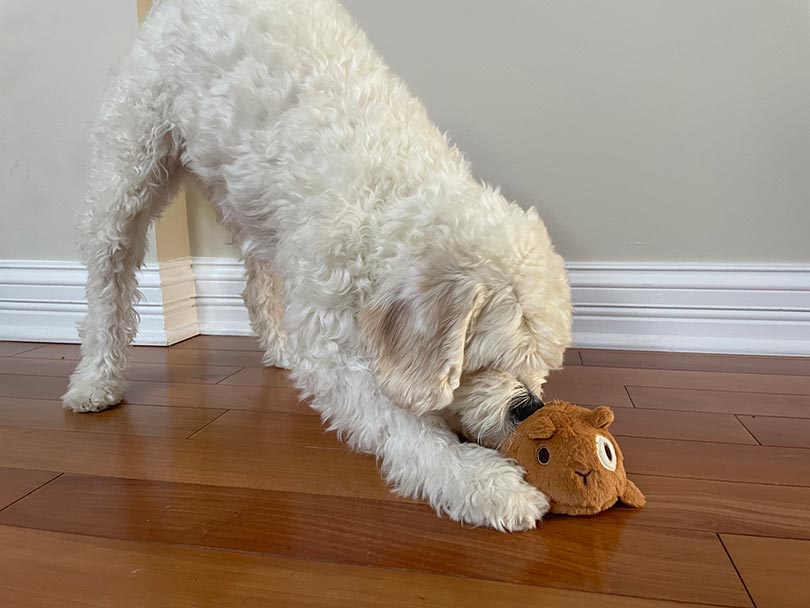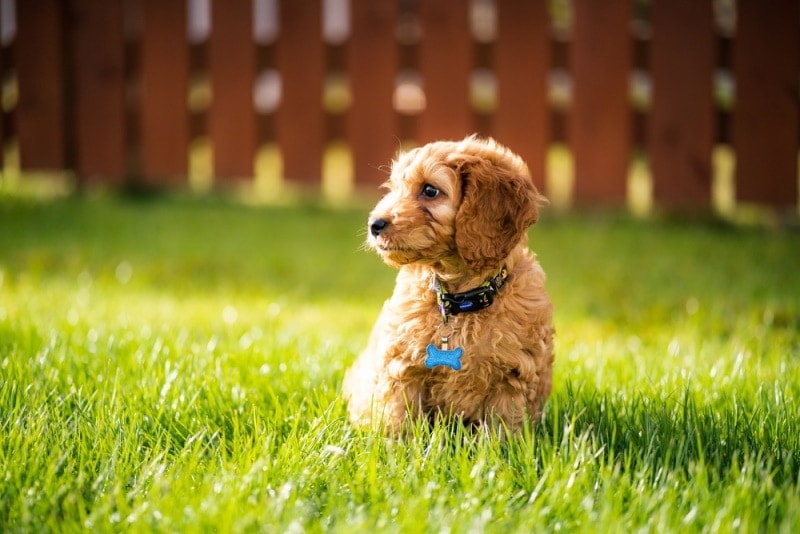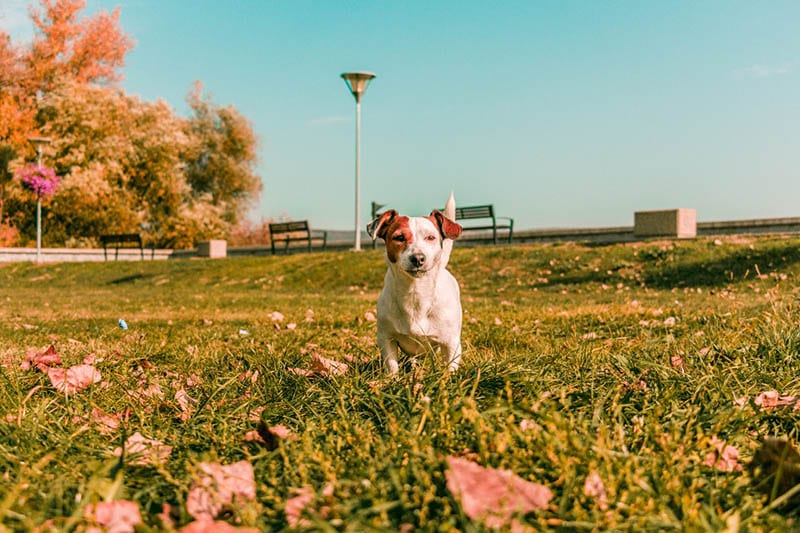14 Reasons Why Your Dog Puts Their Paw On You: Advice & FAQs

Updated on
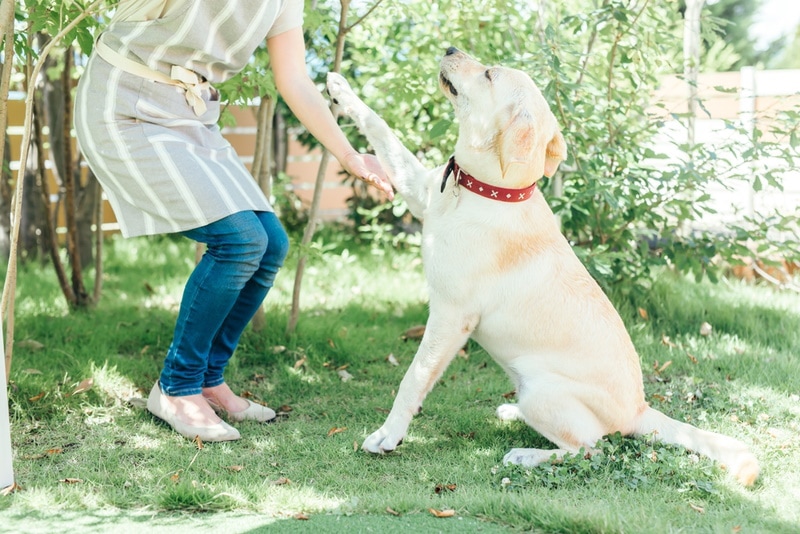
As a dog owner, you’ve probably experienced your furry friend putting their paw on you at some point. While it may seem like a sweet and harmless gesture, there are actually many different reasons why dogs repeatedly put their paws on their owners.
Understanding why dogs put their paws on their owners can be helpful in strengthening your bond with your dog and improving your relationship. By better understanding their behavior, you can respond appropriately and build trust with your furry friend. Let’s take a closer look at what could be happening.
The 14 Reasons Why Dogs Put Their Paws on Their Owners
Everyone knows dogs are affectionate, playful, loyal, and always ready to show their love and appreciation to their owners. It’s not uncommon to see dogs pawing their owners from time to time, but what does it mean?
1. Seeking Attention
Dogs are extremely social creatures that crave attention. They may put their paws on their owners to initiate playtime, go for a walk, or simply get a belly rub. If your dog is pawing you for attention, it’s best to respond positively and spend some quality time with your furry friend.
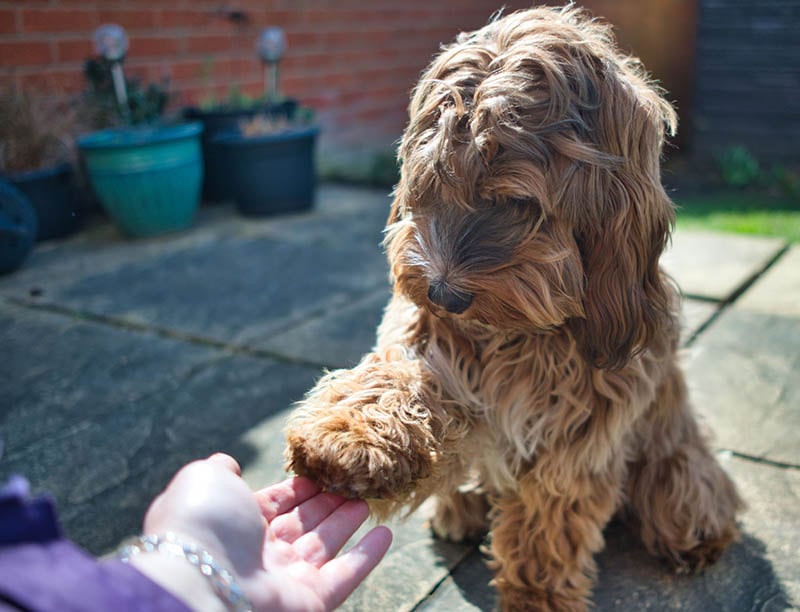
2. Showing Affection
Dogs often show their love and affection by licking, jumping, and pawing. If your dog is pawing you gently and looking at you with those adorable puppy eyes, it’s a clear sign of love and affection. Embrace the moment and give your dog some cuddles.
3. Showing Submission
Pawing can also be a signal of submission. Dogs may put their paws on their owners as a sign of respect, acknowledging you as the alpha. If your dog is pawing you with a submissive posture, it’s best to respond with some gentle petting to reinforce positive behavior.
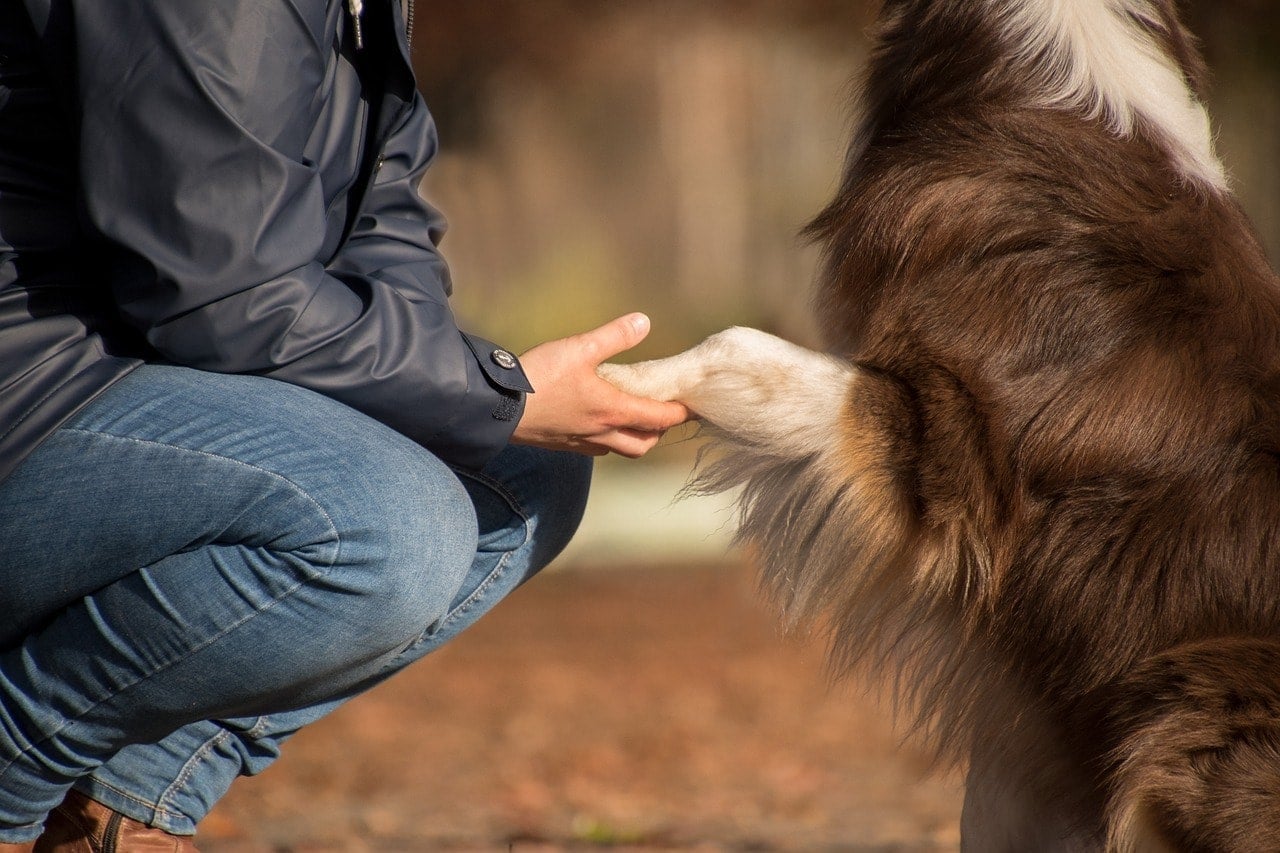
4. Seeking Food
Dogs are always, always, always on the lookout for food. If your dog is pawing you while you’re eating, it’s a sign that he or she is hungry and looking for a treat. Dogs have internal clocks and may also paw their owners for food when it’s nearing mealtime. To avoid encouraging bad habits, try to maintain a consistent feeding schedule for your furry friend.
5. Marking Territory
Dogs have scent glands on their paws that they use to mark their territory. If your dog is pawing you, he or she may be trying to leave behind their scent as a way of claiming ownership. While it’s not necessarily a bad thing, it’s important to teach your dog acceptable behaviors and boundaries.
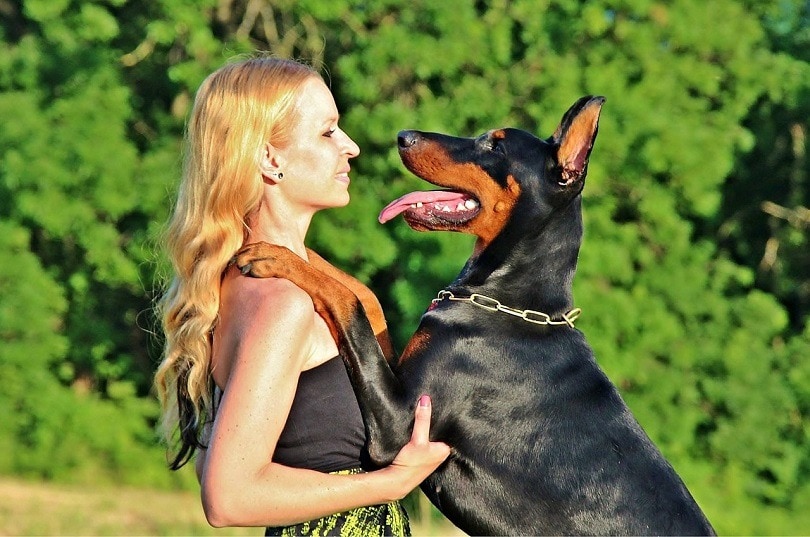
6. Anxiety or Fear
Pawing can also be a sign of anxiety or fear. If your dog is pawing you excessively or aggressively, it’s important to identify the underlying cause and address it appropriately. Consider seeking professional help from a dog behaviorist or consulting with your vet.
7. Seeking Comfort
Dogs are emotional creatures and may seek comfort from their owners when they’re feeling sad or scared. Pawing can be a way of seeking comfort and reassurance. Respond with love and affection to help your furry friend feel safe and secure.
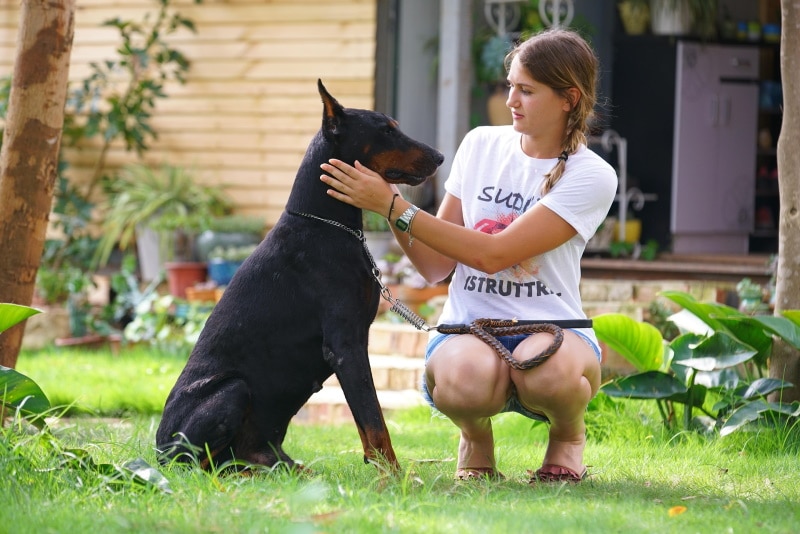
8. Seeking Relief
If your dog is pawing excessively at a certain spot or limb, it could mean they’re in pain or discomfort and want you to check it out. Check their paw pads, nails, or joints for any signs of injury or inflammation. If necessary, seek immediate professional help from your vet.
9. Playfulness
Dogs love to play and may paw you as a way of initiating playtime, especially if they drop a toy at your feet. Respond positively by playing fetch, tug-of-war, or any other fun game your furry friend enjoys. Dogs may also paw their owners as a way of asking to play with other animals, such as cats or other dogs. If your furry friend is pawing you gently and looking towards your other pets, it’s best to allow them some playtime but supervise to avoid any potential altercations.
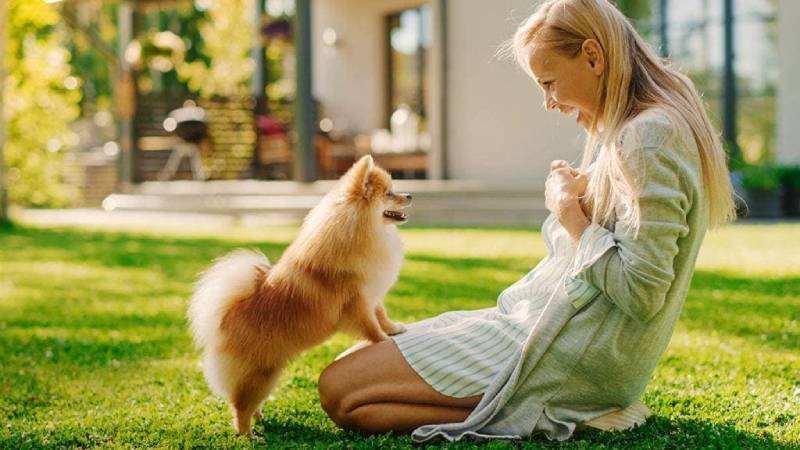
10. Boredom
Dogs need mental and physical stimulation to avoid boredom. If your dog is pawing you excessively or destructively, it could be a sign of boredom. Keep your dog entertained with toys, puzzles, and interactive games.
11. Wanting to Go for a Walk
Dogs love going for walks, and if your furry friend is pawing you while you’re getting ready, it’s a clear sign that they’re excited for a walk. Give them their daily dose of exercise and fresh air, and both of you will feel better.
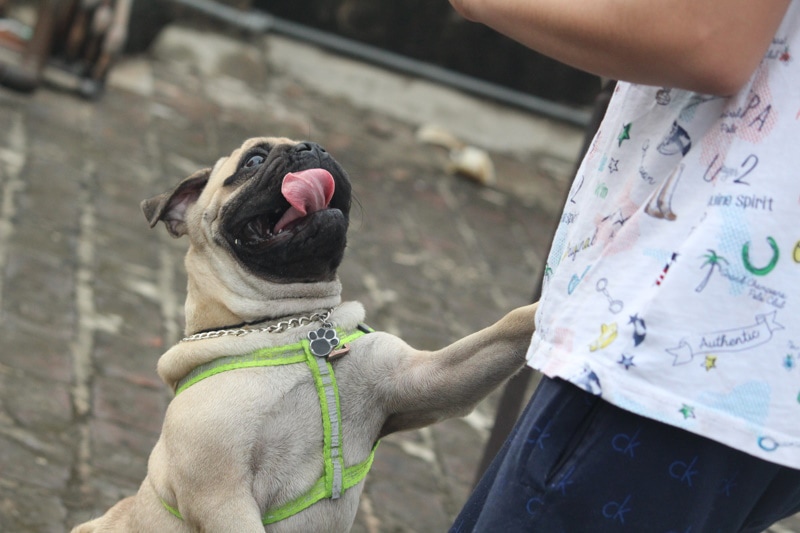
12. Distracting You from Something They Don’t Like
Dogs are smart creatures and may paw at their owners when they want them to stop doing something they don’t like, such as talking on the phone or working on the computer. Respond by identifying the source of frustration and addressing it accordingly.
13. Needing Water
Dogs may paw their owners for water if their bowl is empty or if they want an ice cube to chew on. Respond by ensuring your furry friend has access to clean, fresh water at all times. You can also add some ice cubes or a frozen treat to their bowl for extra hydration on hot days.

14. Curiosity
Dogs may paw their owners out of curiosity, especially if they’re new to the environment or have recently encountered something strange or unfamiliar. Respond by letting your furry friend explore and sniff their surroundings. This will help them become more comfortable with their environment and build confidence.
What Can Owners Do About Pawing?
While pawing can be a natural and harmless gesture for dogs to use, it can become an issue if it’s excessive or disruptive. Actions owners can take to deter pawing for unwanted reasons include:
- Ignoring it and not encouraging the behavior. Over time, the dog may stop pawing if it doesn’t receive a response.
- Redirecting their attention with a toy or treat.
- Training the dog as an alternative means of getting attention or asking for food.
- Using positive reinforcement to encourage good behavior while discouraging behavior that is not desired.
By taking these steps, owners can manage pawing behavior and ensure that their dog is using their paws in a positive and healthy way.
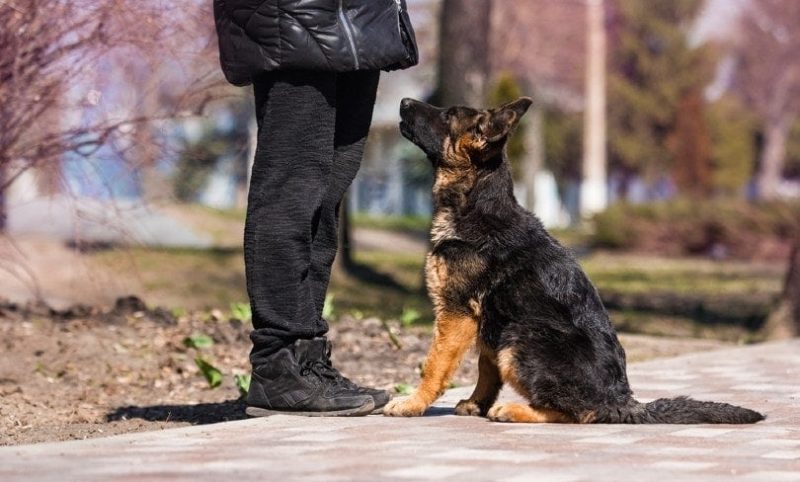
FAQs About Dog Pawing
Q: Is pawing a sign of aggression in dogs?
A: Not necessarily. Pawing can be a sign of many different emotions, such as affection or frustration. If the pawing is accompanied by other aggressive behaviors, it could be a sign that your furry friend is feeling threatened or irritated.
Q: Should owners reward their dogs for pawing?
A: It depends. If your furry friend is pawing for unwanted reasons, such as begging for food or trying to get attention when you’re busy with something important, it’s best not to reward the behavior.
Q: Are there any risks associated with dogs pawing?
A: Pawing can sometimes lead to minor injuries, such as scratches or cuts if the claws are sharp. Additionally, excessive pawing can become disruptive and annoying to owners. It’s important to manage this behavior so that it doesn’t lead to any long-term issues.
Q: How can owners stop a dog from pawing?
A: The best way to stop a dog from pawing is to identify why they’re doing it and respond appropriately. For example, if your furry friend is seeking attention, try redirecting their attention with a toy or treat. If the pawing is excessive, try training them in an alternative behavior. Overall, it’s important to identify why your dog is pawing and respond accordingly.
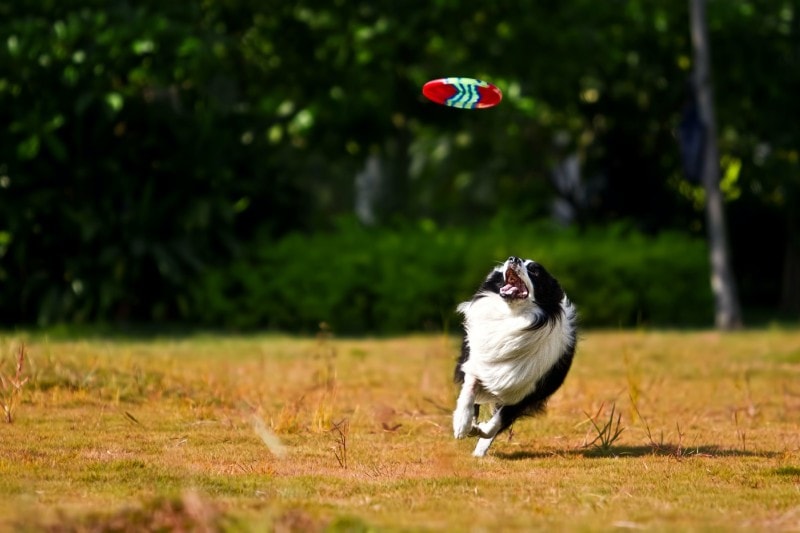
Conclusion
Pawing is a natural behavior for dogs, and there are many reasons why they may use their paws to interact with their owners. Understanding the reasons behind pawing can help owners strengthen their bond with their pets while also ensuring that their behavior is appropriate and not harmful. By taking positive steps to manage pawing behavior, owners can enjoy a harmonious and positive relationship with their beloved furry friends.
Featured Image Credit: buritora, Shutterstock


